How to pick batting for your quilt
Download Batting Reference Chart
The “Middle.” Often taken for granted and overlooked. Not as invisible as the rarely seen bottom layer, yet still hidden by the colorful, dramatic top. Nope, we aren’t talking about societal classes – this blog post is all about batting!
All too often, we choose quilt batting (also known as wadding) based on what’s cheap or on sale. I can pinch pennies with the best miser, but the savings isn’t worth it if hours and hours of piecing and quilting literally fall flat because I used the wrong batting for the job.
Before you invest in a huge roll of “all purpose” batting, think about your quilts … what do you want them look like? How do you want them to feel? It’s okay to have a one-size-fits-all approach to batting – as long as you know what to expect and understand what the batting can and cannot do for your quilt.
Today’s marketplace is bursting with batting options that can bring your quilt to life.
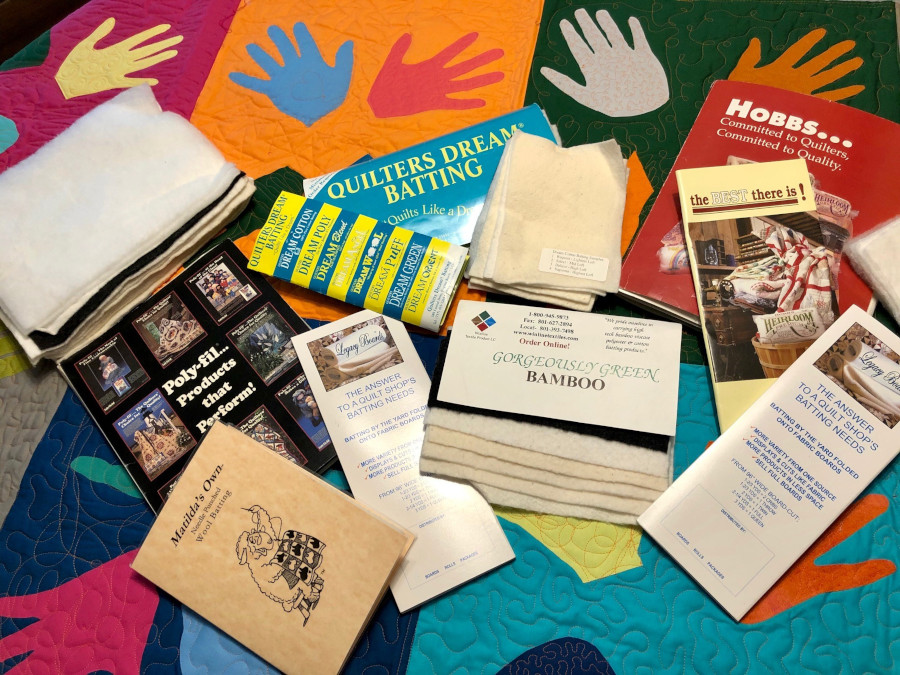
The key to choosing the best one for your project is understanding general batting characteristics and how they affect the outcome – both in terms of look and feel. For example, 100 percent cotton batting is breathable for those hot summer nights, whereas polyester traps heat and adds warmth in the winter.
Answer the questions below to help you choose batting that will bring your quilt to life!
Do you like to see texture on the quilt, or do you prefer to see the stitching line?
If you like texture, choose a blended batting (a combination of polyester and cotton), wool, or 100 percent polyester. Without it, unquilted areas like feathers won’t puff up and create the contrast you’re looking for. For extra loft without adding weight, try adding a layer of wool batting over a base layer of cotton or blended batting. The wool helps support the unquilted areas without feeling stiff or bulky.
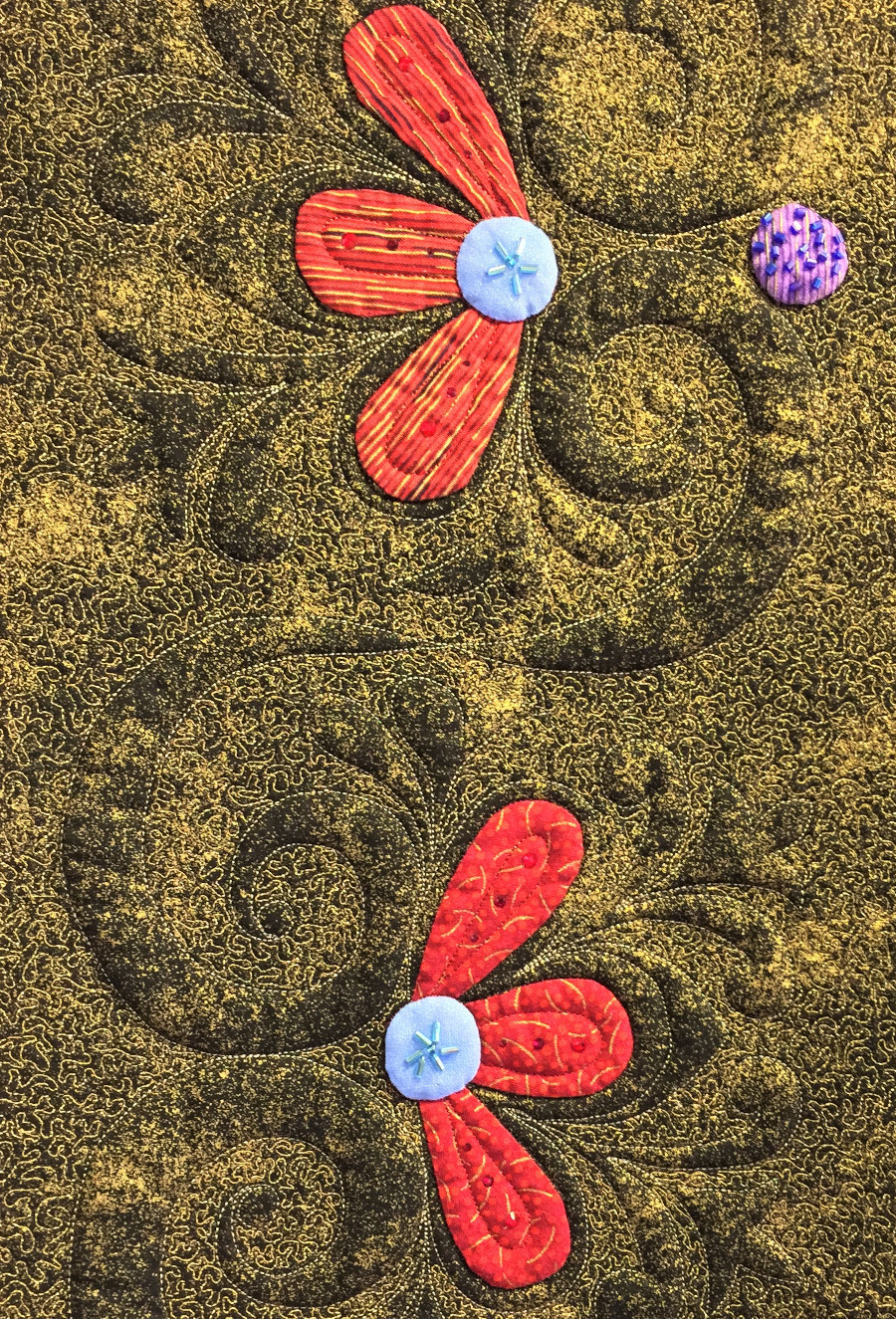
Want to see the stitching lines instead? Then stick with 100 percent cotton or bamboo. Both batting types have very little loft and showcase the stitches well. If you’re thread painting, stick with denser, flat batting to reduce distortion and puckering from the close stitches.
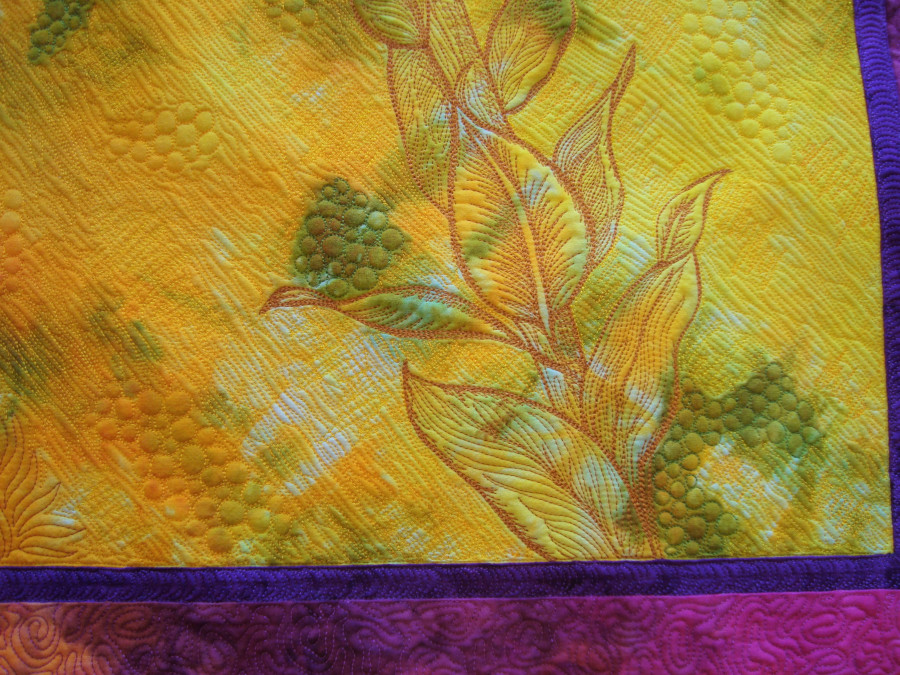
Do you like quilts that feel lightweight, or do you enjoy the comfort of a weighted blanket?
Manmade fibers like polyester can feel lightweight even when they’re two inches thick. But they also trap body heat just like household insulation. When you want to feel that weight, try a dense cotton batting such as Warm and Natural or Quilters Dream Deluxe® or Supreme®. (Like it really heavy? Try two layers!)
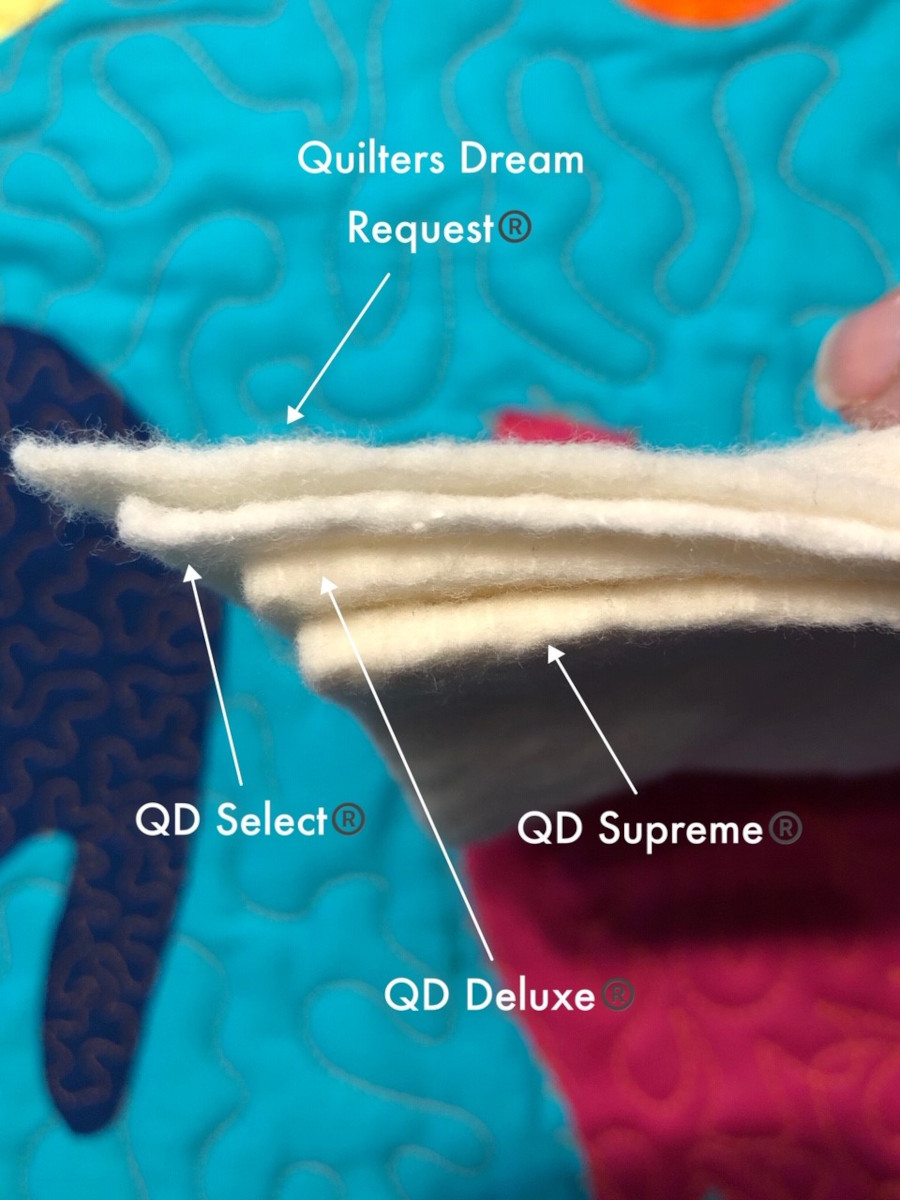
Is the finished size of your quilt important?
Nothing is worse than making a quilt top to fit your brand new pillow top mattress, only to find out it’s too small after you wash it. Though heavy quilting can draw up the quilt, some cotton batting can shrink as much as 5 percent. That may not seem like a lot—but if you do the math, your 100-inch square quilt could end up only measuring 95 inches when it comes out of the dryer. Bummer!
As an example, the first photo below shows a small quilted sample before it was washed. Compare it to the next photo taken after the sample was laundered. What a difference!
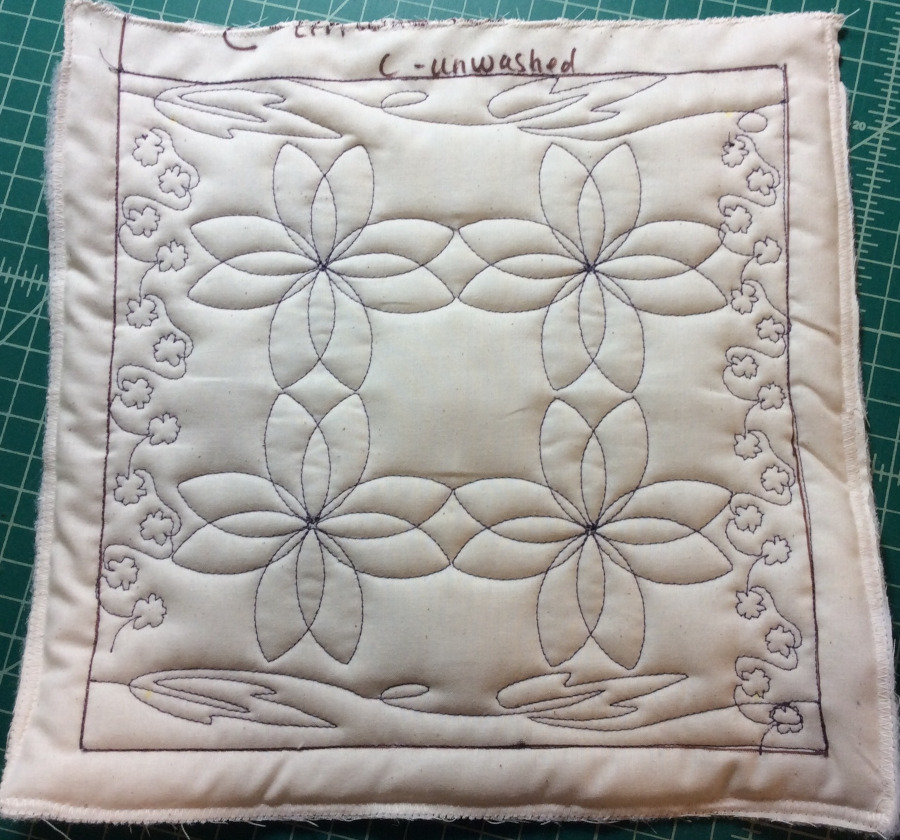
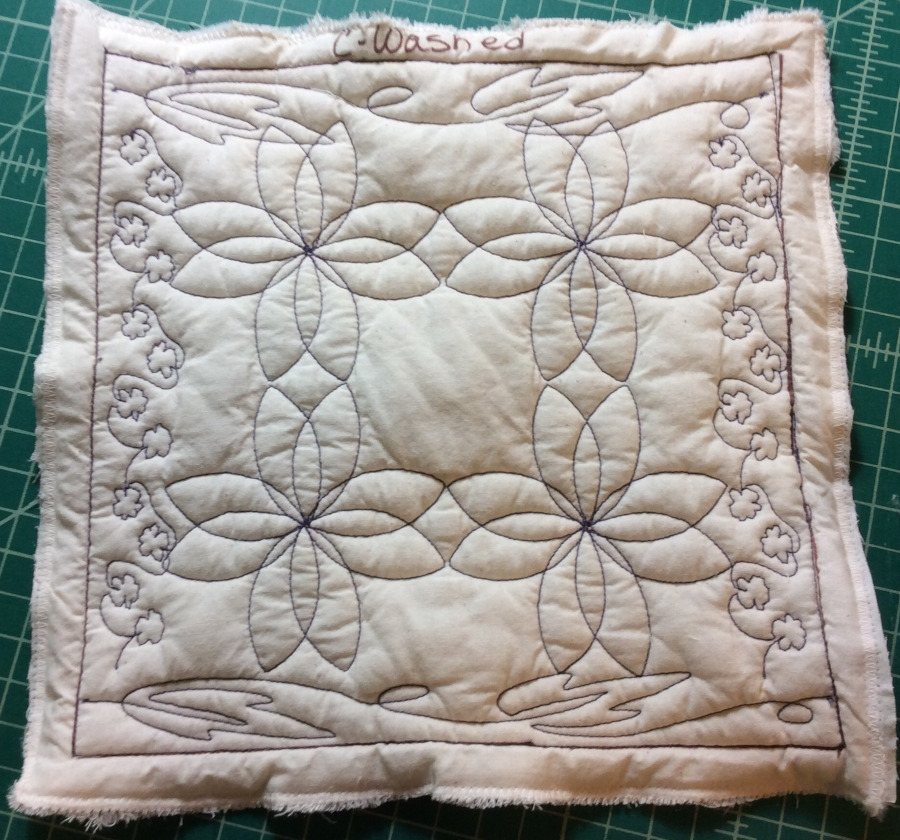
Some cotton batting can be pre-washed to reduce shrinkage—but read the package to verify that and follow instructions carefully. You don’t want to pull out cotton balls from your washing machine instead of a full batt.
If your cotton batting can’t be pre-shrunk and the finished size IS important to you, then consider using a polyester batting for minimal shrinking after washing. Or you may need to go back and add another border to the quilt before you start quilting to compensate.
And since we’re on the subject of washing, verify that your quilting design density matches the recommended maximum distance for quilting stitches. If your stitching lines are too far apart, the batting could clump inside the quilt after washing.
How do you want your quilt to feel after it’s quilted?
How a quilt drapes is affected by the type of fabric in the quilt, the closeness of quilting stitches (quilting density) and the batting type. Batting that’s designed to hold together with minimal stitching (with a recommended quilting distance greater than 8 inches) can feel pretty stiff if it’s quilted closely. That might be just the ticket for a wall hanging. But if you want a cuddly quilt, choose batting with a closer stitch requirement (and don’t quilt it to death.)
Is your fabric dark?
I call it the “Oreo cookie effect”—that instance where you can see the white fluffy filling in between two dark layers of fabric with every needle hole! To avoid it, choose dark batting.
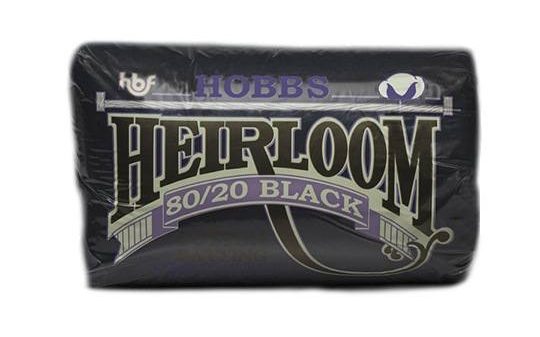
Several companies make products suitable for dark quilts. However, be aware that dark batting may also make any very light fabrics in the quilt look a bit gray or muddy.
If you’re unsure about how a specific type will work with your quilt, purchase a crib-size batting and make a sample first. Visit the company’s website to learn more about their recommendations for washing since each product may be different. Download our handy chart that includes some of the most popular batting products and their characteristics to help you choose one that will make your next quilt look and feel great!



